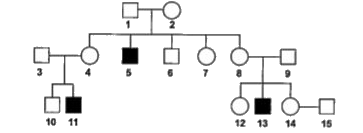Identify the correct statement.
(a) Gypsum is obtained by heating plaster of Paris
(b) Plastic of Paris can be obtained by hydration of gypsum
(c) Plaster of Paris is obtained by partial oxidation of gypsum
(d) Gypsum contains a lower percentage of calcium than plaster of Paris
The correct Answer is:D
To identify the correct statement regarding gypsum and plaster of Paris, let's analyze each option step by step.
Step 1: Understand the Chemical Composition
- Gypsum is chemically represented as CaSO4·2H2O (calcium sulfate dihydrate).
- Plaster of Paris (POP) is represented as CaSO4·0.5H2O (calcium sulfate hemihydrate).
Step 2: Analyze Each Statement
1. Option A: Gypsum is obtained by heating plaster of Paris.
- This statement is incorrect. Gypsum cannot be obtained by heating plaster of Paris; rather, plaster of Paris is obtained by heating gypsum.
2. Option B: Plaster of Paris can be obtained by hydration of gypsum.
- This statement is also incorrect. Plaster of Paris is obtained by heating gypsum, not by hydration.
3. Option C: Plaster of Paris is obtained by partial oxidation of gypsum.
- This statement is incorrect. Plaster of Paris is not obtained through oxidation; it is specifically obtained by heating gypsum.
4. Option D: Gypsum contains a lower percentage of calcium than plaster of Paris.
- To analyze this, we can calculate the percentage of calcium in both compounds:
- For gypsum (CaSO4·2H2O):
- Molar mass of Ca = 40.08 g/mol
- Molar mass of CaSO4·2H2O = 40.08 + 32.07 + (4 × 16.00) + (2 × 18.02) = 172.17 g/mol
- Percentage of calcium = (40.08 / 172.17) × 100 ≈ 23.26%
- For plaster of Paris (CaSO4·0.5H2O):
- Molar mass of CaSO4·0.5H2O = 40.08 + 32.07 + (4 × 16.00) + (0.5 × 18.02) = 146.15 g/mol
- Percentage of calcium = (40.08 / 146.15) × 100 ≈ 27.43%
- Since plaster of Paris has a higher percentage of calcium than gypsum, this statement is correct.
Conclusion
- The correct statement is Option D: Gypsum contains a lower percentage of calcium than plaster of Paris.
- Gypsum is chemically represented as CaSO4·2H2O (calcium sulfate dihydrate).
- Plaster of Paris (POP) is represented as CaSO4·0.5H2O (calcium sulfate hemihydrate).
1. Option A: Gypsum is obtained by heating plaster of Paris.
- This statement is incorrect. Gypsum cannot be obtained by heating plaster of Paris; rather, plaster of Paris is obtained by heating gypsum.
- This statement is also incorrect. Plaster of Paris is obtained by heating gypsum, not by hydration.
- This statement is incorrect. Plaster of Paris is not obtained through oxidation; it is specifically obtained by heating gypsum.
- To analyze this, we can calculate the percentage of calcium in both compounds:
- For gypsum (CaSO4·2H2O):
- Molar mass of Ca = 40.08 g/mol
- Molar mass of CaSO4·2H2O = 40.08 + 32.07 + (4 × 16.00) + (2 × 18.02) = 172.17 g/mol
- Percentage of calcium = (40.08 / 172.17) × 100 ≈ 23.26%
- For plaster of Paris (CaSO4·0.5H2O):
- Molar mass of CaSO4·0.5H2O = 40.08 + 32.07 + (4 × 16.00) + (0.5 × 18.02) = 146.15 g/mol
- Percentage of calcium = (40.08 / 146.15) × 100 ≈ 27.43%
- Since plaster of Paris has a higher percentage of calcium than gypsum, this statement is correct.
- The correct statement is Option D: Gypsum contains a lower percentage of calcium than plaster of Paris.
Similar Questions
Knowledge Check
The pedigree chart given below represents the pattern of inheritance of haemophilia in a family. Study it carefully and answer the following questions:

Identify the correct statement with respect to member '4':AHe is a carrier maleBShe is a carrier femaleCHe is haemophilicDShe is a homozygous femaleConsider a Py orbital of an atom and identify correct statement
As-orbital of another atom produces π-bond when y is the bond formation axisBpy-orbital of another atom produces σ-bond when x is the bond formation axis.Cpz-orbital of another atom produces π-bond when x is the bond formation axis.Ddxy-orbital of another atom produces π-bond when x is the bond formation axis

